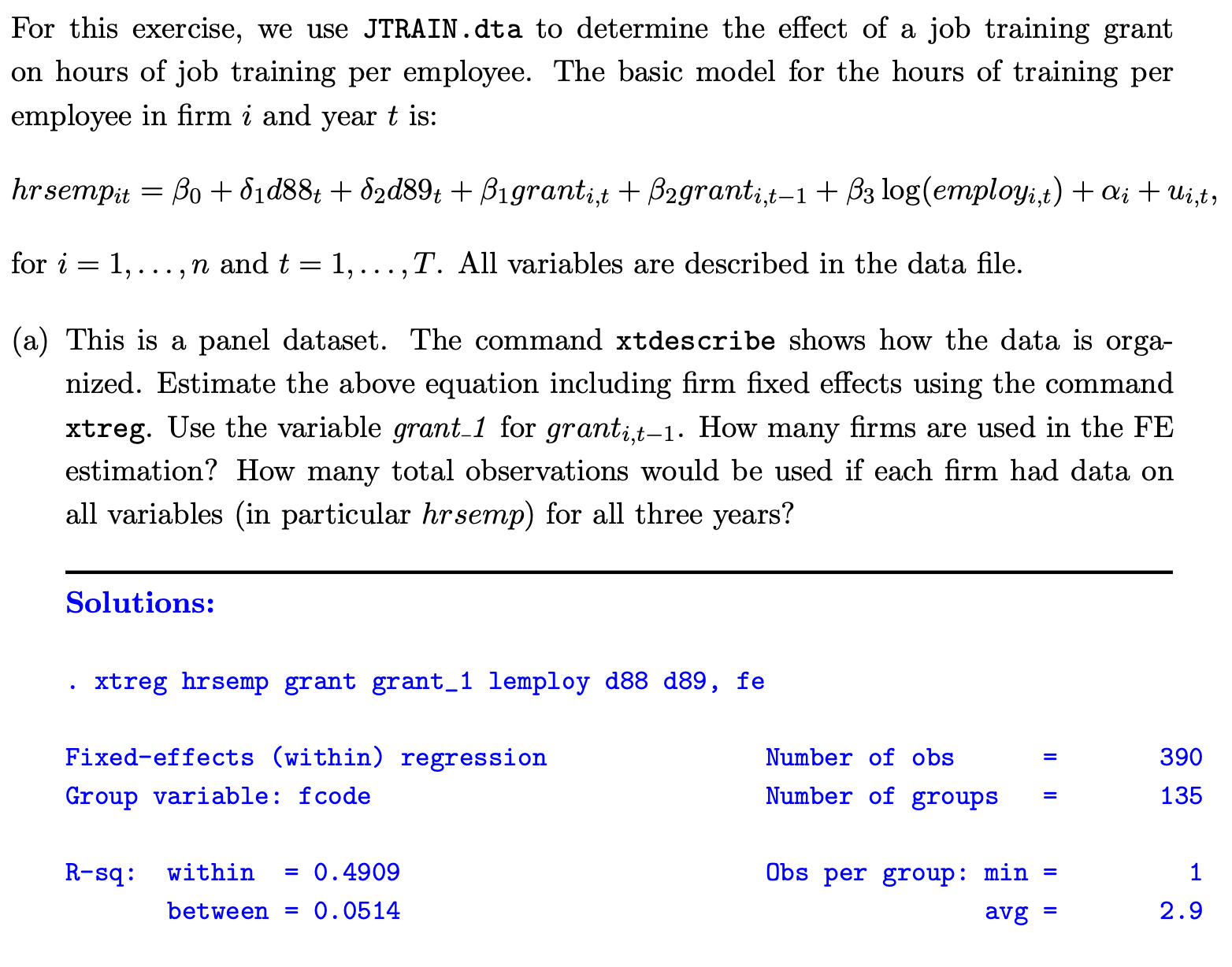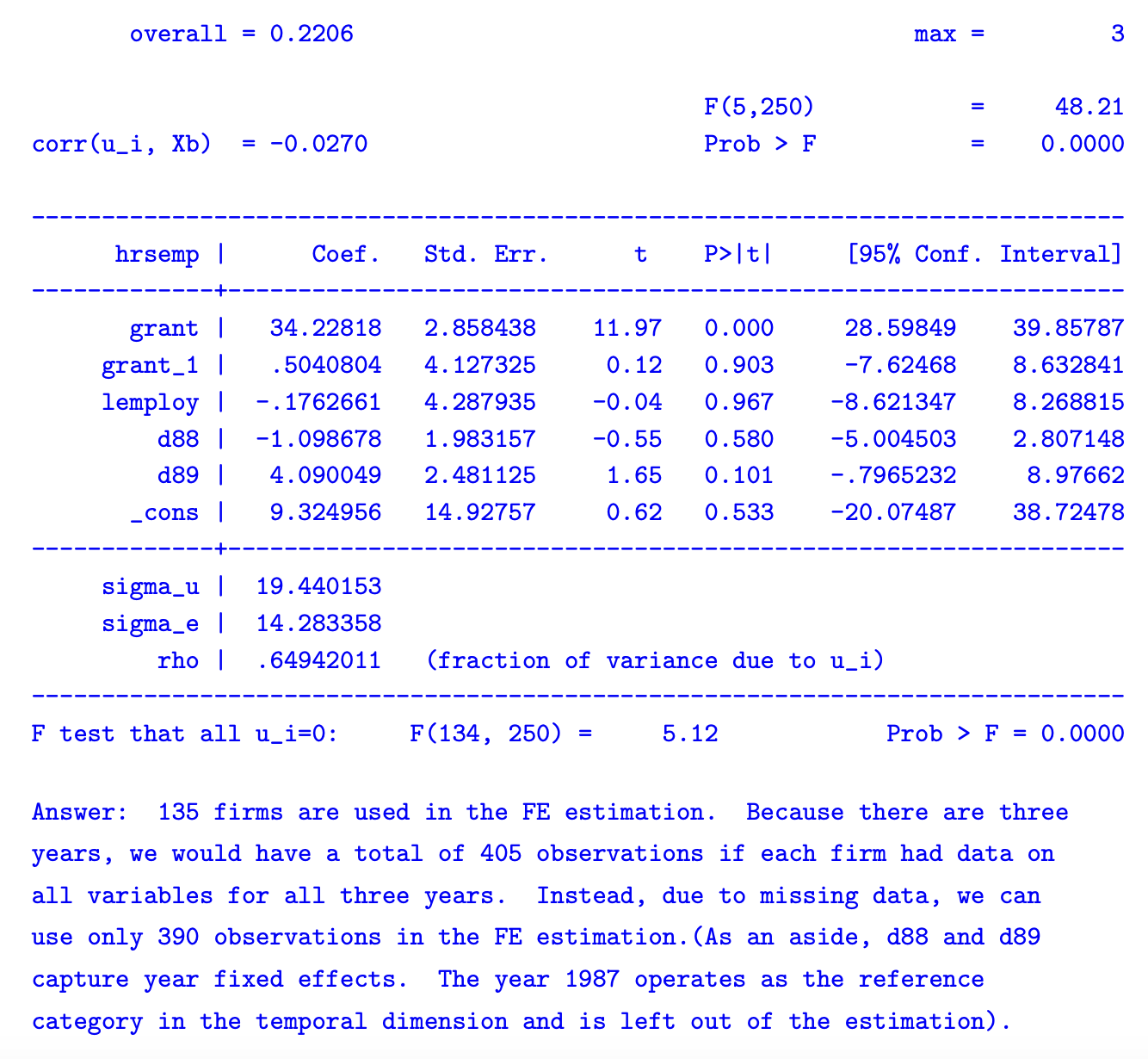Home /
Expert Answers /
Advanced Math /
explain-how-the-answer-is-determined-especially-the-number-of-observations-provide-calculations-a-pa771
(Solved): Explain how the answer is determined, especially the number of observations. Provide calculations. A ...


Explain how the answer is determined, especially the number of observations. Provide calculations. Also provide what other information we can get from this data set, e.g. meaning of R2, adjusted R2 etc.
For this exercise, we use JTRAIN. dta to determine the effect of a job training grant on hours of job training per employee. The basic model for the hours of training per employee in firm and year is: for and . All variables are described in the data file. (a) This is a panel dataset. The command xtdescribe shows how the data is organized. Estimate the above equation including firm fixed effects using the command xtreg. Use the variable grant_1 for grant . How many firms are used in the estimation? How many total observations would be used if each firm had data on all variables (in particular hrsemp) for all three years? Solutions: . xtreg hrsemp grant grant_1 lemploy d88 d89, fe Fixed-effects (within) regression Group variable: fcode R-sq: Number of obs Number of groups Obs per group: min 2.9
Answer: 135 firms are used in the FE estimation. Because there are three years, we would have a total of 405 observations if each firm had data on all variables for all three years. Instead, due to missing data, we can use only 390 observations in the FE estimation. (As an aside, d88 and d89 capture year fixed effects. The year 1987 operates as the reference category in the temporal dimension and is left out of the estimation).
Expert Answer
To estimate the equation including firm fixed effects using the xtreg command in Stata, you can follow these steps: Load the dataset into Stata. Run the xtset command to specify the panel structure of the dataset. Assuming the variables firmid and year represent the firm and year identifiers, respectively, the command would be: